Trade-based money laundering – mapping a truly global problem
Illicit financial flows, or IFFs, cost the global economy hundreds of billions of dollars, if not trillions of dollars each year, robbing communities of resources and lining the pockets of malign actors.
A key channel for these illicit financial flows? The international trade system.
Bad actors continue to exploit global trade, using it as a ruse to shift the proceeds of crime and move value through transactions to legitimize illegal origin and finance illicit activities such as terrorism and war.
Global Financial Integrity (GFI), an influential think tank, estimates that the annual value of trade-related IFFs in and out of developing countries is about 20% of the value of their total trade with advanced economies.
One area of particular concern is trade-based money laundering (TBML). “The aim of TBML … is not the movement of goods, but rather the movement of money, which the trade transactions facilitate,” states the Financial Action Task Force (FATF), the global financial crime watchdog.
According to GFI, TBML is a “highly effective” way of integrating large volumes of criminal proceeds with legitimate income. Trade-based money laundering is attractive to organized crime groups because it is hard to detect, track and investigate owing to its transnational nature and the inherent complexity of the global trade system.
TBML methods:
> Over and under-invoicing of goods and services. Misrepresenting the value of a transaction on an invoice to illegally transfer value across borders.
> Falsely describing goods and services. Misrepresentation of the quality or type of goods or services in order to manipulate transaction value.
> Multiple invoicing of goods and services. Issuing more than one invoice for the same trade transaction.
> Over and under-shipment or phantom shipment of goods and services. Creating a mismatch in the quantity of invoiced goods versus the amount of goods actually shipped.
> Black market peso exchange. Used by criminal groups to move the proceeds of drug sales (often in the United States, in dollars) to drug producer countries (often in Latin America, in pesos) without detection.
> Informal value transfer systems. Transferring value between two jurisdictions without the actual movement of funds.
A decade of cases
Trade-Based Money Laundering: A Global Challenge, a report published earlier this month by GFI, Colombia’s Fedesarrollo, Transparency International Kenya and Uganda’s Advocates Coalition for Development and Environment analyzed and mapped known TBML cases around the world from 2011 to 2021.
The data reveals the most common TBML methodologies, with mis-invoicing representing 63% of all available methods analyzed, followed by informal value transfer systems. Among the mis-invoicing cases, schemes were “diverse and included falsifying the product, country of origin, value, ownership, and even the existence of a product (phantom shipments)”.
In terms of the underlying criminal activity that generated laundered proceeds, the most common was drug trafficking at 43% of all offenses mentioned, tax evasion/tax fraud at 18%, followed by other fraud or scams and corruption.
Additionally, the report found that almost any type of merchandise can be used to launder illicit proceeds used in TBML schemes, with the most typical including cars and transportation vehicles at 24% of all types of products mentioned, metals and minerals at 17%, followed by agricultural products and textiles. In total, the mapping of known TBML cases over the 10 years leading up to 2021 found that 68 specific products, including garlic, jellyfish and silk flowers, were identified in such illegal activity.
The jurisdictions with the most known TBML cases included the United States, followed by Mexico, Colombia, China and Hong Kong. A typical TBML case analyzed involved three jurisdictions.
Though the report notes that “prevalence of cases may also speak to institutional capacity to detect and investigate such cases”. The analysis is based on known cases, with the overall universe of TBML cases going undetected likely to be much larger.
What next?
Trade-based money laundering impacts communities and countries, funneling money away from socio-economic development to fund terrorism, conflict, and illicit trading networks. It is clear that TBML remains a huge problem hiding, for the most part, in the shadows. The true extent of trade-based money laundering and trade-based crime more generally is unknown, and that is highly concerning for leaders and legitimate business.
To better understand the extent of this problem and prevent it, the report led by GFI concludes with an analysis of current efforts as well as recommendations for ways to strengthen the fight against TBML.
Here are five of the key recommendations:
> Raise awareness of TBML and its risk factors
Leaders and governments should ensure appropriate, updated, and actionable information on TBML risks to stakeholders in their country.
In action: As well as international bodies such as GFI and FATF publishing guidance, regulators are also warning over crime risks. The UK’s Financial Conduct Authority as well as the US Government Accountability Office has warned players in trade about the need for better financial crime controls.
> Convene inter-agency task forces
Based on the transnational nature of TBML, multiple government agencies need to co-ordinate in order to effectively tackle TBML.
> Implement national beneficial ownership registries
As shell and front companies are often used in TBML, countries should implement beneficial ownership registries that contain accurate and verified information about the real owners of corporate structures.
In action: Last year the US Treasury’s Financial Crimes Enforcement Network issued a ruling to establish a beneficial ownership reporting system as part of the Corporate Transparency Act.
> Utilize new technology
Technology can support in assessing pricing of trade transactions, especially as mis-invoicing is one of the most common methods of TBML.
In action: TradeSun has been working with its partners and bringing together leading data sources to launch a comprehensive fair price check to better assess pricing, investigate any mismatches in real-time and, therefore, reduce mis-invoicing.
> Real-time information exchange
One of the best ways to detect trade mis-invoicing is to compare the exports of one country with the imports of its trading partner to detect discrepancies.

